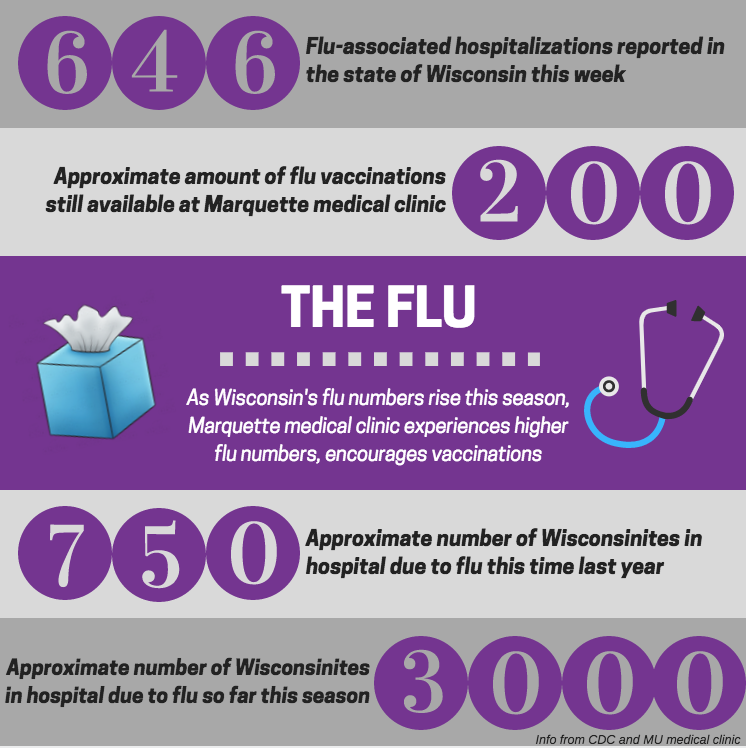This semester, students have more to battle than just a new schedule. A new strain of the influenza virus, A[H3N2], is particularly infectious and is already reaching pandemic status in 47 states in terms of infection rates, according to the Medical Society of Milwaukee County.
Influenza is an upper respiratory illness that is often incorrectly associated with the stomach flu.
According to the society, the number of influenza cases is slowly increasing. There are two subtypes of the influenza virus circulating around Milwaukee, according to the society, with 87 percent being influenza A and 13 percent influenza B.
Of the influenza A cases, 99 percent have been A[H3N2], this season’s prominent virus. The society also determined that Milwaukee County is experiencing the flu at a high seasonal rate.
Dona Wininsky, director of public policy and communications with the American Lung Association of Wisconsin, said this year’s flu is considerably more severe than that of past years. She said this year’s strain is being compared to the swine flu because of its levels of infectiousness.
“We should be aware that there are more cases of influenza than in previous years,” Wininsky said. “It’s a very strong strand, and it is being spread quite quickly around the population.”
Paul Biedrzycki, director of disease control and environmental health for the City of Milwaukee Health Department, said in an email that this season’s flu is more severe than the previous two seasons and is similar to the 2003-04 season.
Biedrzycki said concerned citizens should stay home from work or school if they have a fever, cough or sore throat until the fever can subside without the use of anti-fever medication.
Biedrzycki said hand washing and cough etiquette, along with antiviral medication prescribed by a health care provider, are the most effective ways to prevent the virus from spreading.
Biedrzycki said you should avoid pregnant women and the elderly if you are already sick.
“This year’s strain of influenza is not a novel strain like the pandemic H1N1 strain and has been common over the past decades,” Biedrzycki said. “Genetically similar but not identical strains of the H3N2 flu subtype have occurred in the past with sometimes similar or worse severity. People should not be alarmed but be aware that flu is widely circulating in the community right now and the best protection is always getting a flu vaccination ahead of time and taking care of yourself throughout the season, including getting lots of rest and eating nutritiously.”
Curtis Allen, a spokesperson at the CDC, said it’s difficult to compare seasons because every influenza season is different.
“This year we are seeing a more moderate to severe season because of the strength of the circulation H3N2 virus,” Allen said. “In past years those strains have resulted in more severe outbreaks, but then again we can’t say how severe the season is until after the season.”
Allen said influenza is a difficult virus to treat and prevent because it mutates and there are many different strains that circulate around the U.S. and the world. He added that the vaccination contains the strains that are most likely to be circulating in the US.
The CDC is currently predicting this year’s vaccine to have a success rate of about 62 percent.









